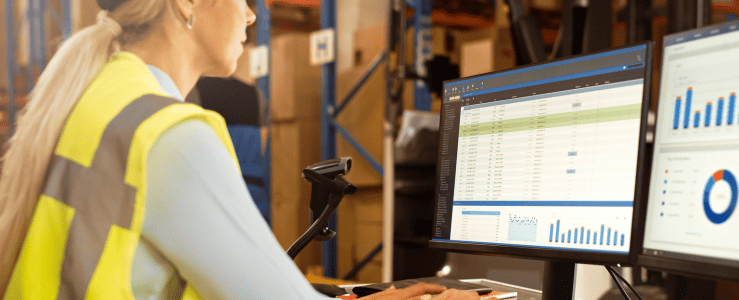Blog

3 Ways Data Virtualization Can De-Risk SAP Data Security and Data Integrity
Data security and integrity are on the minds of every corporate CIO. Risks from the outside, like cyber attacks, ransomware and phishing are what typically comes to mind. But what about data security and integrity issues from within–specifically those tied to integrations? For SAP enterprise ERP customers, this can be a widespread issue as SAP data integration is exceedingly laborious and then difficult to maintain. Well-intentioned IT decisions to replicate SAP data in third party front-end systems or data warehousing environments can create unintended data exposures and jeopardize the single-source-of-truth that should be your SAP ERP.
Here are 3 ways SAP integration is part of de-risking data security and integrity program.
1. Centralized security controls
By maintaining backend data inside SAP ERP, access can be easily monitored or restricted. To connect to modern front-end systems, SAP integration via data virtualization is key–as it allows data to remain inside SAP, without replication, and only be exposed as needed in front-end systems like Salesforce, ServiceNow, eCommerce systems and more. This controls exactly which SAP data is available and, depending on the configuration, can be only a virtualized view or a bi-directional transaction. Even when data is bi-directional, it is made to conform to SAP business rules and invalid or wrongly formatted data is rejected and never allowed inside SAP.
2. End-to-end security
When data remains inside SAP without replication, even as it’s used for business processes, it cannot be tampered with or corrupted as it moves from one system to another. For example, a quote is generated inside Salesforce, using SKUs, variant configurations, and account-based pricing discounts. That SAP-acceptable quote is then approved by the customer and processed by the ERP for manufacturing. No re-keying, no manual application of discounts, no outside data is injected. This is only possible by using a data virtualization framework–guaranteeing 100% accurate-to-SAP quotes.
This also preserves margins–as the quote is accurate to not just configuration, but pricing–even with regularly changing material costs, part availability, and supply chain availability.
3. Automated data backup
Your SAP ERP has extensive data backup provisions–ensuring your data is available 24/7 and even in the event of an emergency it can quickly be recovered. Dispersed data is at greater risk of data corruption, loss, or accidental deletion. For example, IT Asset Management–from inventories, to purchasing, tracking maintenance schedules, and more–are frequently done based on reports run from a central system like SAP, or specialized asset management software. That report is then manually manipulated, updated, and those changes must then be re-input or re-imported into the core system. Any time reports, or spreadsheets, are core to a process, you risk data loss or corruption because they are moment-in-time snapshots, often stored within employee’s personal document management systems.
Leveraging your SAP ERP as a single source of truth ensures data accuracy but also data security and integrity. All SAP integrations should be centered on virtualizing SAP data inside the front-end system rather than duplicating or batch processing data between the systems. The integrity of your ERP data, and the accuracy of your transactions requires nothing less.
Learn about how data virtualization can deliver SAP data directly into your Asset Management or IT Procurement system. Or how real-time SAP data drives accurate quotes–even for Variant Configuration products. If you’re ready to de-risk your SAP integrations, let’s talk.


